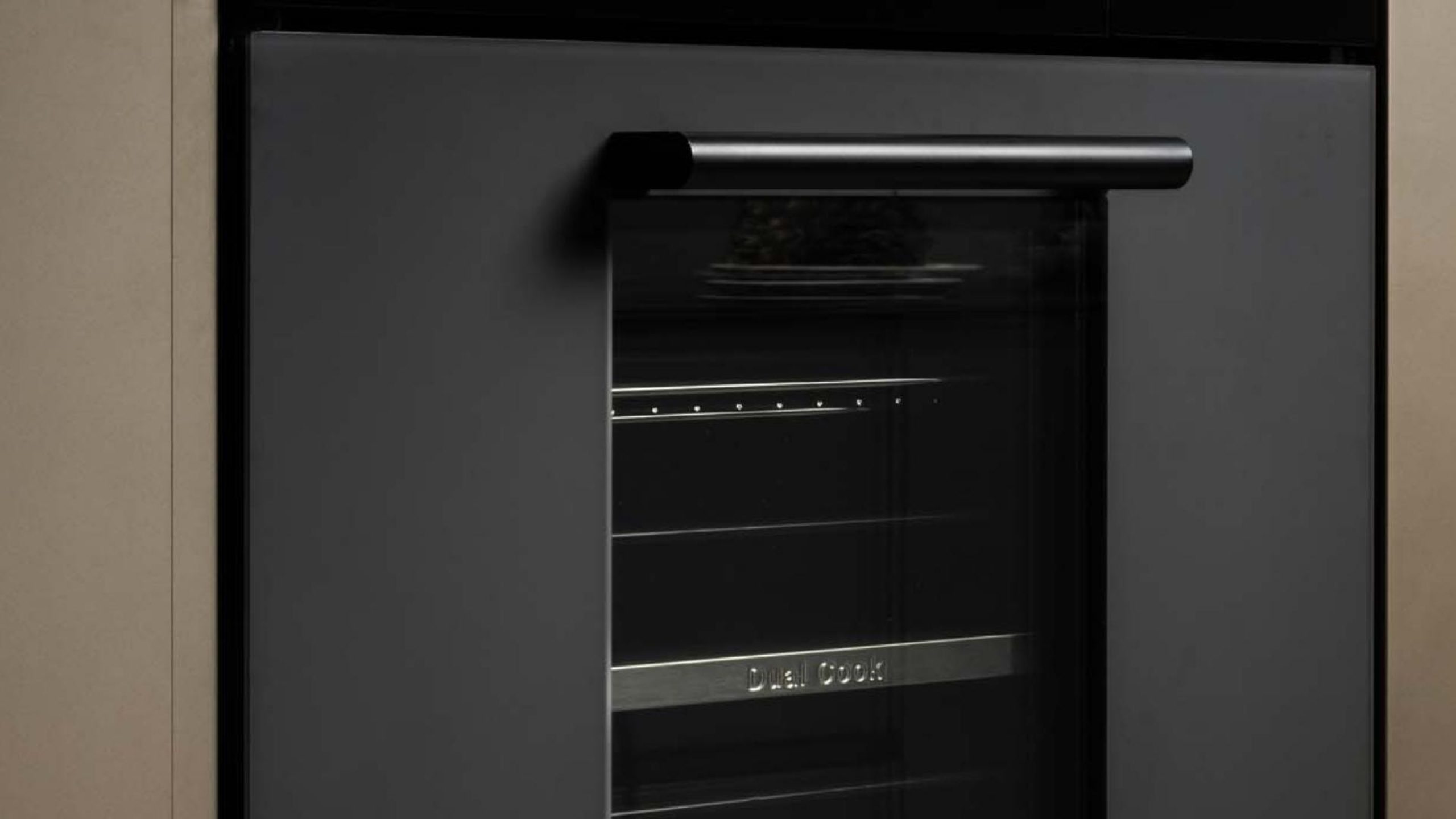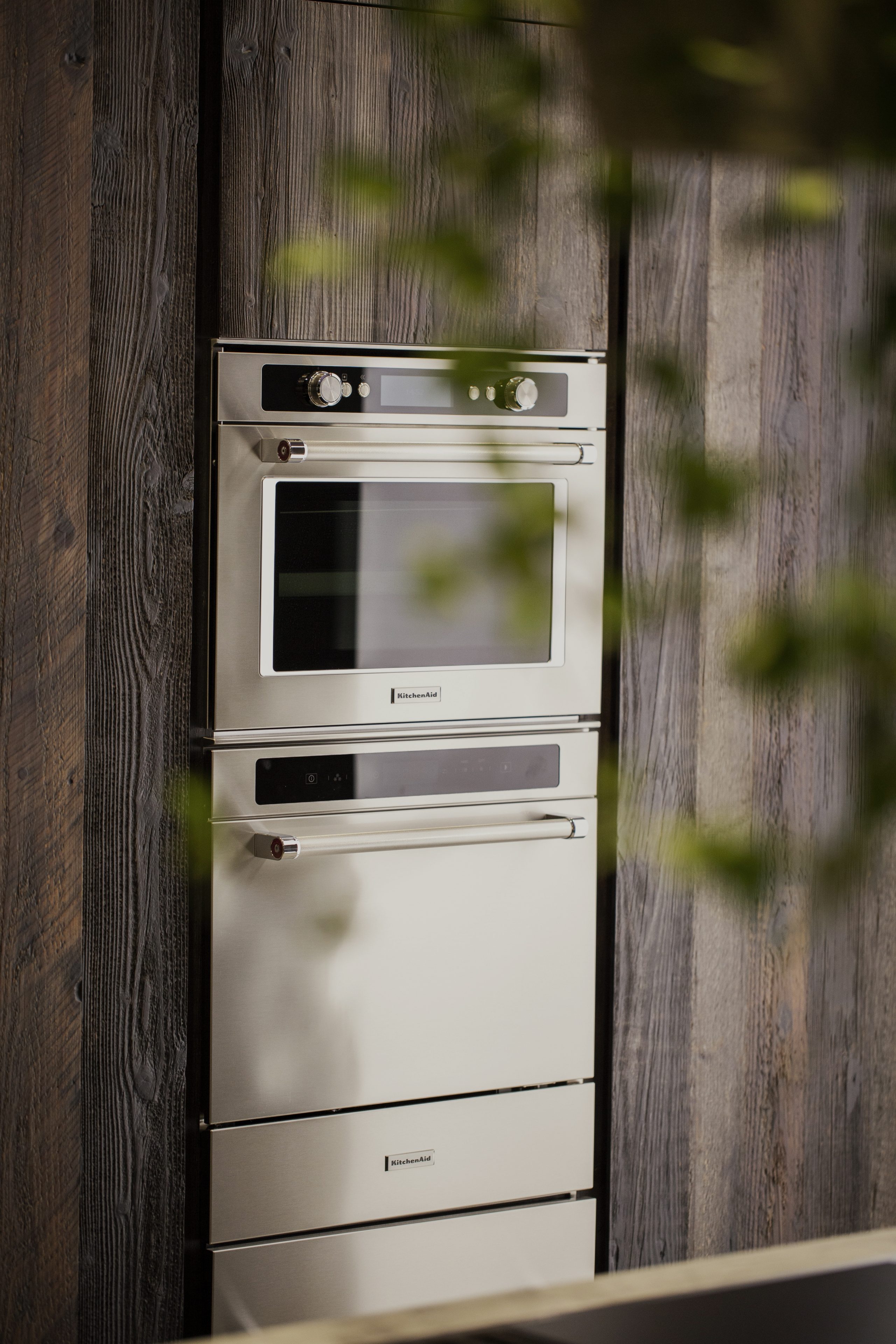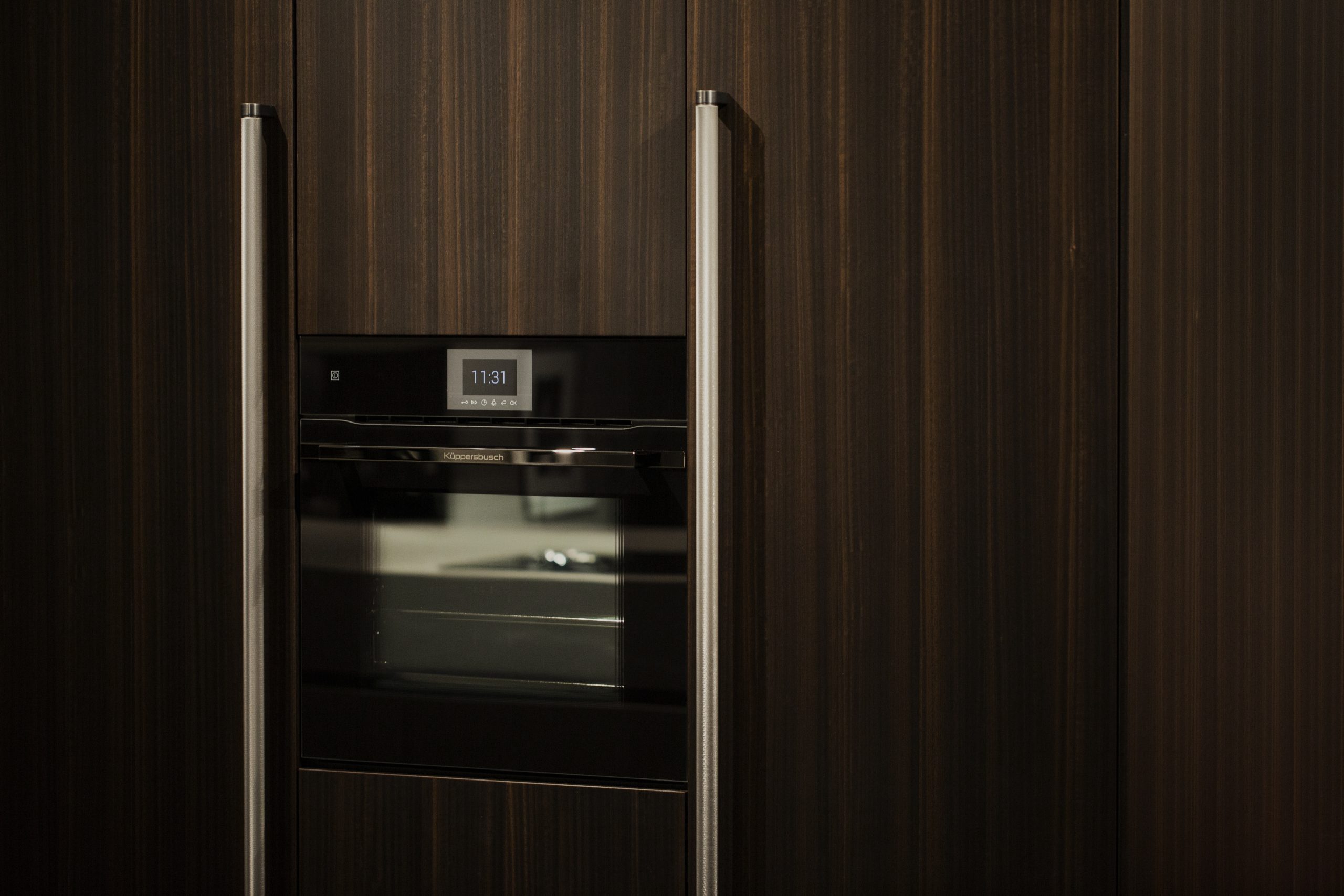May,2024
Complete guide to buying a kitchen oven

Guide to buying a kitchen oven: what you need to know
When evaluating the purchase of an oven for your kitchen, there are many things to keep in mind. The oven is a true ally in the kitchen. To ensure you choose the oven that best meets your needs, take the necessary time to understand the features it should have.
Here are some examples of aspects to consider:
1. Efficient Cleaning
Cleaning the oven is essential to maintaining hygiene and extending the life of your appliance. Models with pyrolytic technology simplify this task by turning residues into ash through a program that uses high temperatures. This feature will make maintenance easier and faster for better long-term use.
2. Different Cooking Modes
An oven with a wide range of cooking programs offers flexibility in preparing various recipes. Whether you want to steam cook or achieve even cooking on multiple racks, you will have the opportunity to experiment with new dishes and preparation methods. If you are an avid cook, you will appreciate the variety of cooking modes such as traditional, fan-assisted, and grill, while a basic model might be more suitable for those who prefer a simpler approach.
3. Energy Efficiency
Carefully evaluate the energy class of the oven to reduce long-term costs and environmental impact. Purchasing ovens with an A rating or higher ensures greater efficiency and sustainability, helping to reduce energy consumption and carbon emissions. Energy efficiency is also important in the long run because lower energy consumption translates to a lighter energy bill—an aspect not to be underestimated if you use the oven frequently in your kitchen.
4. Budget and Additional Costs
Before purchasing, set a clear budget and consider additional costs such as installation and maintenance. Find a balance between performance and cost to meet your needs without exceeding your set budget.
5. Warranty and Customer Support
Although it might seem like a minor detail, it is important to check the warranty policies and customer support offered by the manufacturer and retailer. In case of unforeseen events or breakdowns, timely and professional support can make a difference. Ensure you understand the terms and conditions of the warranty and have access to reliable and available customer service to resolve any issues.
Features and tips for buying a built-in oven
Just as the name suggests, a built-in oven cannot be placed anywhere in the kitchen, but we'll reveal a small trick based on your needs later. When harmoniously integrated into the kitchen structure, this appliance can significantly enhance your experience.
As with everything, when deciding which oven to purchase for your kitchen, the details make the difference between different oven models. Consequently, this also affects the quality of a built-in oven.
First and foremost, dimensions are important. Pay attention to measurements and, if in doubt, measure twice to ensure the oven fits perfectly in the designated niche. Besides external dimensions, the internal capacity of the oven is equally important as it determines how much food you can cook simultaneously.
Also, consider the oven's capacity in liters, as the external size may not always reflect the internal dimensions. A useful tip is to assess the capacity based on the number of people living in the house or who use the kitchen regularly.
Safety is a priority when it comes to choosing an oven.
Look for features such as a door lock and differentiated ignition, which can prevent household accidents and ensure safe oven use. For example, the door lock prevents accidental opening during operation, reducing the risk of burns, especially if there are children in the house.
This offers you the peace of mind to cook without constantly watching over them. Differentiated ignition ensures that only the selected burner is turned on, avoiding potentially dangerous gas leaks. Unlike gas models, electric ovens do not emit combustible gases or smoke during operation, significantly reducing the risks associated with unburned gas leaks or the formation of toxic fumes.

Where to install a built-in oven
You might be wondering, "Where can I place a built-in oven in my kitchen?"
The answer is: it depends.
Your preferences and the layout of your kitchen are crucial. However, it's important to consider the so-called work triangle, which is the optimal placement of the three main functions in the kitchen: cooking, washing, and storage.
This concept is the foundation of an efficient kitchen. The oven should be positioned in the cooking area, preferably next to the cooktop. A common location is under the cooktop, but increasingly popular in modern kitchens is the column position. Placing the built-in oven at a convenient eye level makes its use more practical and easier.
For example, during cooking, you can check the food without constantly having to look down. This becomes important if you want to avoid back strain over time while using the oven. Additionally, having the oven at the same height as the countertops minimizes the risk of accidents or food spills.
Features and tips for buying an electric oven
The electric oven is an essential component of any modern kitchen. Thanks to its versatility and numerous cooking options, the electric oven has become the preferred choice for many.
Among the features to consider when purchasing an electric oven is the variety of cooking modes. This makes it suitable for different culinary needs.
The static mode is particularly suitable for roasts, bread, and pizza, providing traditional and flavorful cooking. If you prefer more uniform and faster cooking, the fan-assisted oven is the ideal choice. Thanks to the presence of a fan, this type of oven ensures even heat distribution, making it perfect for baking, fish, and vegetables. However, it is important to consider the risk of contamination for people with celiac disease or gluten intolerance. In these cases, avoiding the fan-assisted mode may be advisable. Opting for the static mode or placing gluten-free foods on the top and gluten-containing foods on the bottom can significantly reduce this risk, ensuring a safe and worry-free kitchen.
Another aspect is the speed of cooking. The ability to reach high temperatures relatively quickly allows electric ovens to prepare meals rapidly and efficiently. This is particularly useful after heavy workdays or when you have little time available for cooking.
Additionally, electric ovens are known for their ability to distribute heat evenly during cooking. This means that food cooks evenly on all sides without the need to turn or rotate it during the cooking process. This not only simplifies meal preparation but also ensures consistent and high-quality culinary results.
The combination of speed, uniform cooking, and safety makes electric ovens an ideal choice for anyone seeking an excellent culinary experience in the kitchen. There are various models available on the market, including one that will meet your needs.
What to do after purchasing a kitchen oven
Have you finally purchased your new oven and can't wait to test it out with your favorite recipes? Before you start experimenting, there are some important things to do to ensure the safe and efficient use of your new appliance.
The first thing to do is to read the instruction manual carefully. Although it may seem tedious, taking the time to understand the different cooking functions available is essential to fully utilize the potential of your new oven and to ensure your safety during use.
After reading the manual, it's time to clean your oven before using it. During production and transportation, the oven may have been exposed to dust or dirt. Therefore, it's important to clean it thoroughly to protect your health and to keep your appliance in great condition from the first use. Gently remove all packing materials, such as adhesive tapes and polystyrene, and make sure to clean both the oven compartment and the accessories with a neutral or specific oven cleaner.
After sanitizing the oven, it's time to start cooking!
Although it may be tempting to use the freshly cleaned oven to cook your favorite dishes, it's important to remember that it may still smell new.
To eliminate this smell, we recommend heating the oven empty at the maximum temperature, keeping the door closed, and ventilating the kitchen by opening windows or turning on the extractor hood.
During the first use, you may also notice some noises coming from the oven. These noises are normal and are caused by the operation and break-in of the appliance. However, if the noises are excessively loud or accompanied by other strange things, there may be an issue that requires assistance.
With these simple precautions, you can fully enjoy your new electric oven and prepare incredible dishes for yourself and others, with the peace of mind knowing that you have followed all the correct procedures for safe and efficient use.

How to clean an oven
Keeping your kitchen oven clean is essential for several reasons. First and foremost, your health is the most important. Accumulated dirt can become a breeding ground for bacteria, mold, and other pathogens that can contaminate food during cooking, putting your health and that of the people you cook for at risk. Additionally, excessive dirt can affect the quality and taste of the food prepared in the oven, ruining your favorite dishes.
Besides these aspects, maintaining your oven clean is important to ensure its proper functioning over time. A layer of dirt can hinder the even distribution of heat inside the oven, affecting cooking and causing potential technical problems that might require costly repairs.
Here are some tips to help you achieve effective oven cleaning:
1. Use hot water and mild soap: A simple solution reminiscent of grandmother's methods but effective for cleaning. Soak a soft cloth in the solution and gently clean the inner walls of the oven and the accessories.
2. Use baking soda: Baking soda is an excellent ally in oven cleaning due to its whitening and degreasing properties. Mix a thick paste of baking soda and water and apply it to the internal surfaces of the oven. Let it sit for a few hours or overnight, then remove the mixture with a damp cloth.
3. Use steam: If the oven you purchased has a steam cleaning function, it can help you remove stubborn dirt and burnt food residues. Steam softens the dirt, making it easier to remove without the use of harsh cleaners.
4. Invest in specific oven cleaning products: When shopping at the supermarket or home stores, you will find products for cleaning. Choose the one that suits you best and carefully follow the instructions on the product label for the best results.
5. Clean regularly: It may seem trivial, but keeping your oven clean is important. As you read before, besides all the hygienic and longevity reasons for your appliance, there is also an aesthetic issue. A dirty or poorly kept oven could ruin the overall look of your kitchen.
Buying an oven for your kitchen is an important decision, but make sure it is the right choice for you first. There are several aspects to consider, such as the type of oven, cleaning, cooking modes, and energy efficiency. After choosing the oven that best suits you, cleaning it regularly and using the right products can make a difference. With this guide, you will be ready to fully use your new appliance and prepare incredible dishes for yourself and others.
